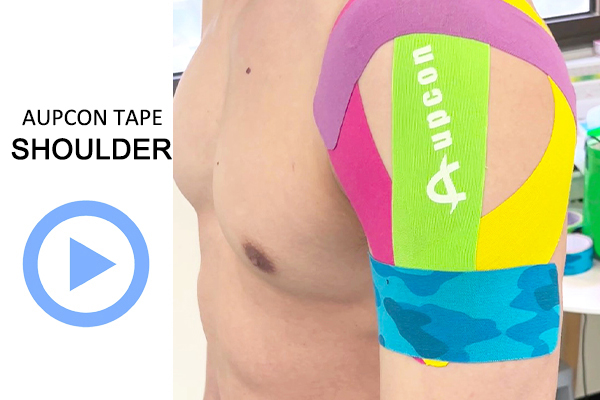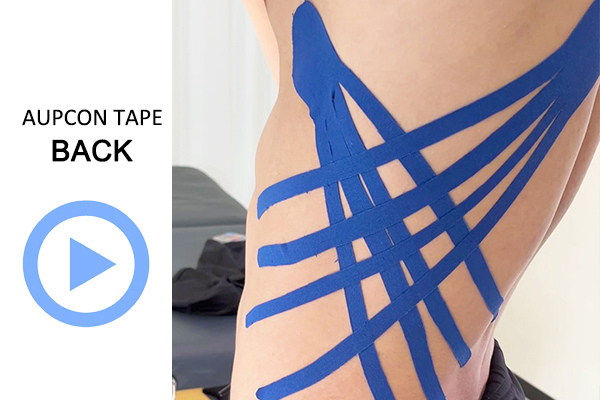How to use shoulder kinesiology tape
Deltoid Syndrome
The shoulder has the broadest range of use among all body parts. It seems to be inseparable whether you are standing or sitting. Therefore, it is also an easily injured part. Many parts around the shoulder may cause pain or illness due to shoulder injuries, such as deltoid, supraspinatus, rotator cuff injury, neck pain, tendonitis, dislocated shoulder, frozen shoulder, arm pain, pinched nerve, etc. This article will use a combination of pictures and text to explain how to use shoulder kinesiology tape, a simple and effective physical therapy method, to help treat and relieve one of the shoulder pains: deltoid syndrome.
To get the Aupcon tapes mentioned in the content: cotton kinesiology tape, synthetic kinesiology tape, nylon kinesiology tape, pre-cut kinesiology tape, punched kinesiology tape, kinesiology tape strips, etc., click to jump to our kinesiology tape product page for bulk purchase.
kinesiology tape Taping tips
- Apply shoulder kinesiology tape 1 hour before starting an activity.
- Clean the shoulder area before applying the tape.
- Do not wear the muscle tape shoulder for longer than 7 days.
- When cutting the pain tape shoulder, each corner must be trimmed to a rounded angle to prevent the edges from peeling off prematurely due to friction.
- Rub the pain tape shoulder many times to activate the adhesive and adhere to the deltoid.
- Remove paper backing before application and always make sure the ends of the tape are applied WITHOUT stretch
How do you use shoulder kinesiology tape for deltoid syndrome?
Make a fixed anchor point under the deltoid muscle.
Tilt the shoulders back 30 degree. Apply tape to the left acromion with 50% stretch.
Apply the anchor without stretch under the deltoid muscle.
Tilt the shoulders forward 30 degrees. Around the deltoid muscle with 50% stretch.
2 peices of I-tapes around the deltoids.
Fix the anchor point at the starting point of the first and second.
Apply the tape upward with 50% stretch.
Rub a few times to ensure a snug fit.
Apply 75% of the stretch to the acromion.
Fix the anchor point at the starting point of the first and second.
Apply tape at the 3 tape anchors below the deltoid muscle with 50% stretch.
What is a shoulder kinesiology tape?
Main Function
1. Provide support
2. Promote blood circulation
3. Reduce inflammation
4. Relieves pressure and pain
Application
Shoulder kinesiology tape is used for shoulder pain, neck pain, arm pain, and lower back pain problems.
Precautions
If your skin develops allergic symptoms, please stop using it!
Cotton kinesiology tape
for shoulder deltoid muscles
→
Frequently Asked Questions
The deltoid syndrome is a chronic pain syndrome. The deltoid muscle is located under the skin of the shoulder and wraps the shoulder joint from the front, back, and outside. As an abductor muscle, it plays a vital role in shoulder abduction. Sudden shoulder abduction movements, in particular, are the most susceptible to injury. Long-term arm raising, straight arm weight bearing, lifting objects to the side, pushing handstands, etc., will damage the subdeltoid bursa, causing chronic cumulative damage, leading to tendon degeneration, chronic inflammation, adhesions, scars, and contractures.
- Reduce the repeated contraction of the deltoid muscle as much as possible and reduce the movement of raising the arm.
- For those who sit for long periods and work, placing the keyboard too high will fatigue the deltoid muscles. The most appropriate posture is to adduct the elbows, with the keyboard and elbows at the same level. Try to sit on a chair with armrests to support the elbows.
- Shoulder kinesiology tapeis recommended. The pain tape shoulder can help support the deltoid muscle group with gentle force and is very helpful in relieving pain.
The working principle of shoulder kinesiology tape is to increase lymphatic return and promote blood circulation, thereby relieving and adjusting shoulder pain, weakness, and other discomforts and helping shoulder muscles, such as the deltoid muscle, to resume normal function.
- Gently remove the tape along the direction of the hair.
- Covering the tape entirely with water or oil and rubbing it gently allows easy removal.
- Cleaning the hair ahead of time can reduce the pain of removing the tape.
Other Body Parts
Proper use of shoulder kinesiology tape can relieve our deltoid pain. But there’s more than one way to treat deltoid and shoulder pain. This article shows only one of them. If you want to learn more about shoulder pain treatment, stay tuned for our upcoming tutorial on how to use kinesiology tape.





